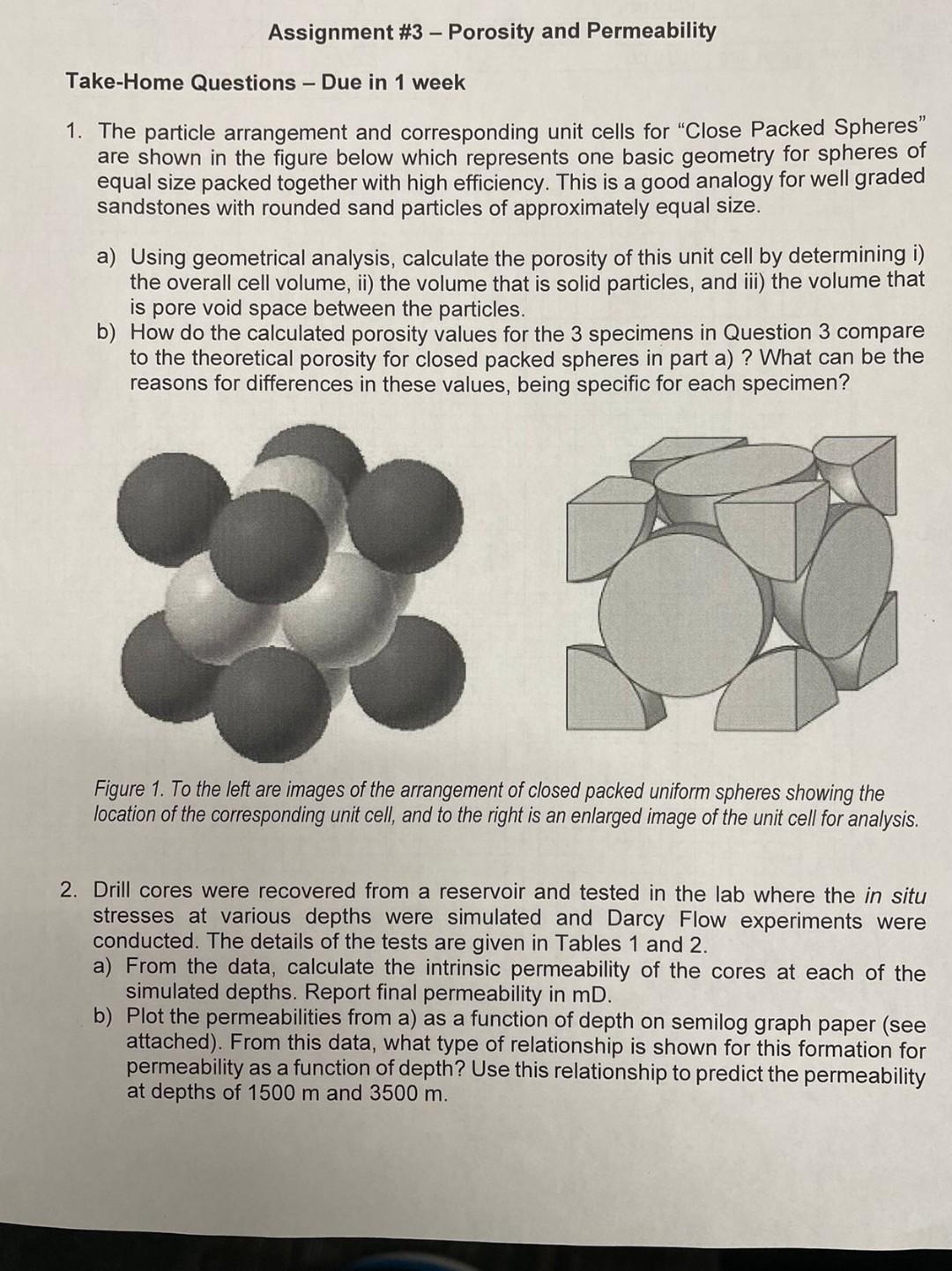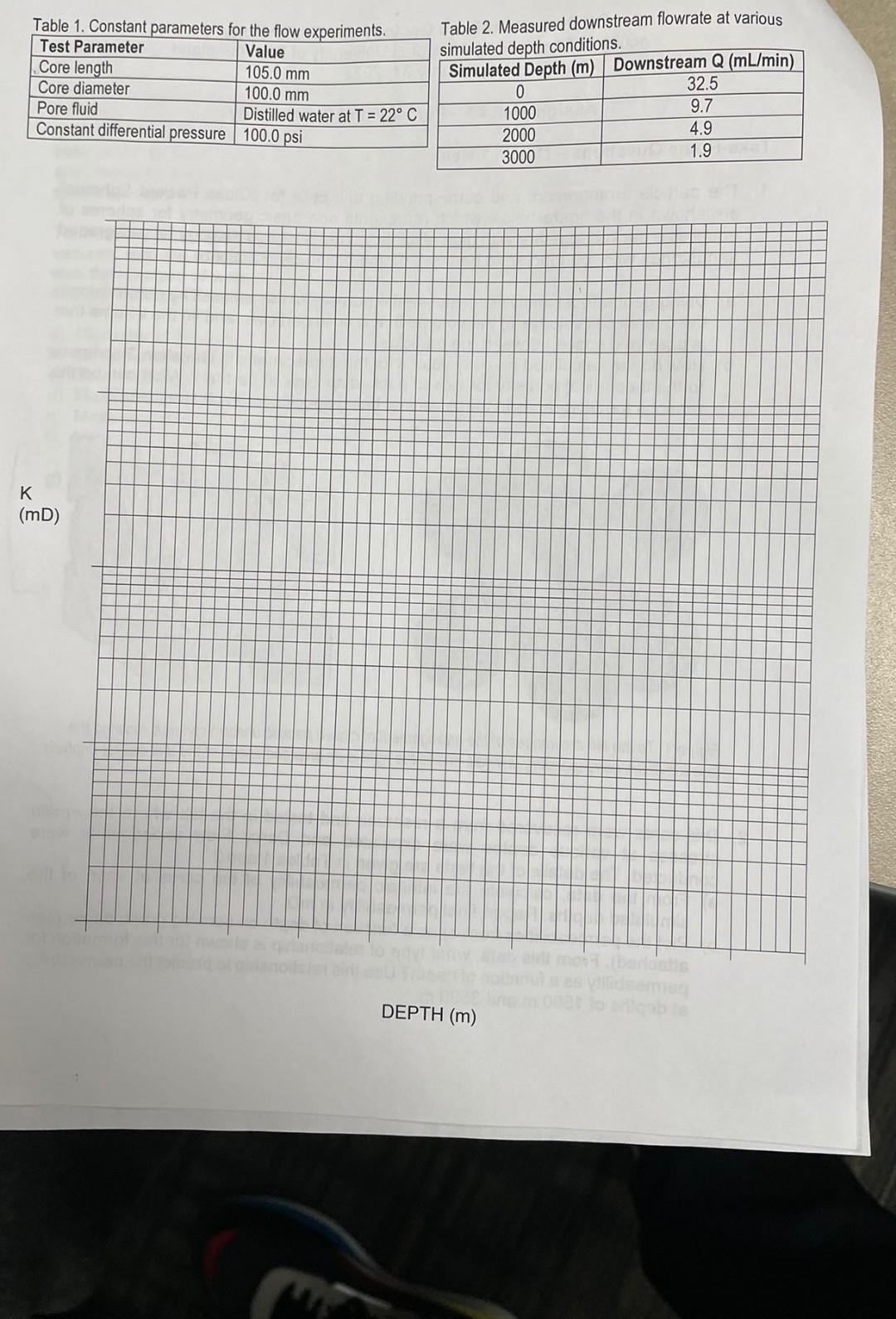Answered step by step
Verified Expert Solution
Question
1 Approved Answer
Assignment #3 - Porosity and Permeability Take-Home Questions - Due in 1 week 1. The particle arrangement and corresponding unit cells for Close Packed Spheres


Assignment #3 - Porosity and Permeability Take-Home Questions - Due in 1 week 1. The particle arrangement and corresponding unit cells for "Close Packed Spheres are shown in the figure below which represents one basic geometry for spheres of equal size packed together with high efficiency. This is a good analogy for well graded sandstones with rounded sand particles of approximately equal size. a) Using geometrical analysis, calculate the porosity of this unit cell by determining i) the overall cell volume, ii) the volume that is solid particles, and iii) the volume that is pore void space between the particles. b) How do the calculated porosity values for the 3 specimens in Question 3 compare to the theoretical porosity for closed packed spheres in part a) ? What can be the reasons for differences in these values, being specific for each specimen? Figure 1. To the left are images of the arrangement of closed packed uniform spheres showing the location of the corresponding unit cell , and to the right is an enlarged image of the unit cell for analysis. 2. Drill cores were recovered from a reservoir and tested in the lab where the in situ stresses at various depths were simulated and Darcy Flow experiments were conducted. The details of the tests are given in Tables 1 and 2. a) From the data, calculate the intrinsic permeability of the cores at each of the simulated depths. Report final permeability in mD. b) Plot the permeabilities from a) as a function of depth on semilog graph paper (see attached). From this data, what type of relationship is shown for this formation for permeability as a function of depth? Use this relationship to predict the permeability at depths of 1500 m and 3500 m. Table 1. Constant parameters for the flow experiments. Test Parameter Value Core length 105.0 mm Core diameter 100.0 mm Pore fluid Distilled water at T = 22 C Constant differential pressure 100.0 psi Table 2. Measured downstream flowrate at various simulated depth conditions. Simulated Depth (m) Downstream Q (mL/min) 0 32.5 1000 9.7 2000 4.9 3000 1.9 K (mD) ===== DEPTH (m)
Step by Step Solution
There are 3 Steps involved in it
Step: 1

Get Instant Access to Expert-Tailored Solutions
See step-by-step solutions with expert insights and AI powered tools for academic success
Step: 2

Step: 3

Ace Your Homework with AI
Get the answers you need in no time with our AI-driven, step-by-step assistance
Get Started


